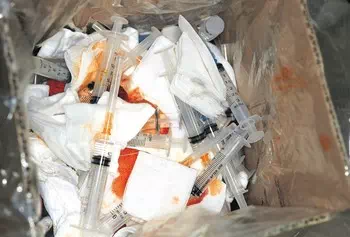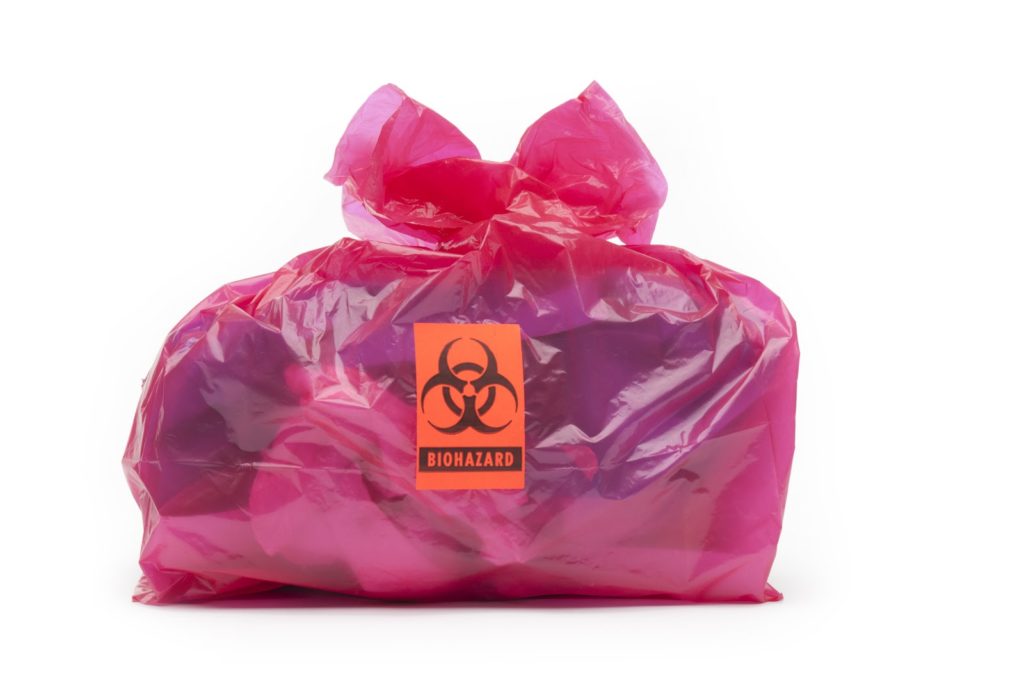Convenience at Your Doorstep: Situating Reliable Medical Waste Removal Near Me
Convenience at Your Doorstep: Situating Reliable Medical Waste Removal Near Me
Blog Article
Comprehending the Different Types of Waste Disposal Techniques
In the realm of waste management, the range of disposal techniques offered today is vast and differed, each technique serving a distinctive objective in dealing with the difficulty of waste disposal. click here. From recycling techniques that aim to provide brand-new life to materials, to the detailed procedures of hazardous waste administration, the landscape of waste disposal is intricate yet important for environmental sustainability. Comprehending the subtleties of these different strategies not just loses light on the value of responsible waste administration but also motivates us to reassess our approach towards garbage disposal in a quickly progressing globe

Recycling Techniques
Recycling techniques are crucial for sustainable waste monitoring methods in both industrial and residential setups. medical waste disposal. By carrying out efficient recycling techniques, a considerable amount of waste can be drawn away from landfills, saving natural deposits and minimizing the environmental effect of manufacturing procedures
In property areas, curbside recycling programs play a crucial function in motivating families to different recyclable materials from general waste. Products such as paper, plastics, glass, and metals can be sorted and collected for processing right into brand-new items, decreasing the requirement for raw products and energy-intensive manufacturing procedures.
Industrial facilities additionally depend on reusing techniques to lessen waste generation and advertise a circular economic climate. By executing closed-loop systems, organizations can reuse products within their production procedures, decreasing expenses and ecological impact. medical waste removal service. Additionally, commercial recycling programs usually involve partnerships with specialized recycling facilities to guarantee that materials are correctly sorted, refined, and rehabilitated right into the supply chain
Composting Methods

Oxygenated fixed stack composting includes blending organic waste materials in a large stack and routinely transforming it to guarantee appropriate aeration. This technique is fit for smaller-scale procedures and homes.
In-vessel composting involves placing organic waste in a shut container with regulated conditions for temperature level and oygenation. Windrow composting includes developing long rows of organic waste and consistently turning them to advertise disintegration - medical waste removal service.
Land Fill Disposal
Land fill disposal is a typically used technique for handling waste that can not be reused or composted. It involves burying waste in designated locations of land, with proper precautions to avoid ecological contamination. Garbage dumps are engineered centers created to isolate waste from the surrounding atmosphere. The waste is compressed and covered with dirt daily to reduce odors, discourage parasites, and reduce the spread of trash. Modern garbage dumps are equipped with safety liners and checking systems to avoid leakage of damaging compounds right into the soil and groundwater. Methane gas, a byproduct of breaking down natural waste in land fills, is often collected and utilized as a resource read here of eco-friendly energy. Despite advancements in land fill modern technology, issues stay concerning the long-lasting ecological influences, such as groundwater contamination and greenhouse gas exhausts. Initiatives to minimize dependence on garbage dumps include promoting waste reduction, recycling, and exploring alternative garbage disposal approaches to decrease the ecological impact related to typical garbage dump disposal practices.

Waste-to-Energy Incineration
Incineration of waste for energy generation is an approach increasingly being thought about as a choice to traditional garbage dump disposal strategies. Waste-to-energy incineration involves the combustion of waste materials at heats, generally in specialized facilities created to create electricity or warm with the procedure - click here. This technique not just lowers the volume of waste that would or else be predestined for land fills but likewise uses the warm created throughout incineration to develop energy
One of the essential advantages of waste-to-energy incineration is its capability to create electricity while reducing the environmental effect contrasted to traditional land fill disposal approaches. By converting waste right into power, this strategy aids in reducing greenhouse gas emissions and reliance on fossil fuels for energy generation. Furthermore, waste-to-energy centers are equipped with sophisticated air pollution control modern technologies to minimize potential toxic wastes released during the combustion procedure.
Contaminated Materials Management

Considering the crucial significance of responsible waste monitoring techniques, especially in the world of ecological sustainability, the emphasis now shifts in the direction of the complex domain of Hazardous Waste Monitoring. Contaminated materials poses substantial threats to both human health and wellness and the environment, demanding specific handling and disposal techniques. Usual instances of dangerous waste consist of chemicals, batteries, pesticides, and digital waste.
Contaminated materials Management entails the identification, collection, transport, treatment, and disposal of products considered hazardous or potentially dangerous. This procedure requires adherence to rigorous policies and standards to reduce damaging effects on communities and public wellness. Various approaches are employed in taking care of dangerous waste, consisting of recycling, secure landfills, encapsulation, and chemical therapy.
Proper Contaminated Materials Monitoring is important for preventing contamination of soil, water resources, and air pollution. It is vital for markets, laboratories, healthcare facilities, and other generators of unsafe waste to implement robust monitoring approaches, training programs, and emergency action intends to ensure the risk-free handling and disposal of these products. Failing to manage contaminated materials properly can have far-reaching effects, emphasizing the importance of persistent and accountable practices in this field.
Conclusion
In verdict, waste disposal strategies play a crucial duty in handling and lessening the effect of waste on the environment. It is important for markets and people to understand the different waste disposal methods available and pick the most proper technique for sustainable waste monitoring.
In the world of waste administration, the variety of disposal techniques readily available today is huge and varied, each approach offering a distinct objective in resolving the challenge of waste disposal. click here. From recycling approaches that intend to provide new life to products, to the complex processes of harmful waste administration, the landscape of waste disposal is complex yet crucial for ecological sustainability. Comprehending the nuances of these various methods not just drops light on the importance of responsible waste monitoring however additionally triggers us to rethink our strategy towards waste disposal in a swiftly progressing world
Initiatives to reduce reliance on landfills consist of promoting waste decrease, recycling, and checking out alternative waste disposal techniques to minimize the ecological footprint linked with standard landfill disposal methods.
It is vital for individuals and sectors to recognize the different waste disposal techniques readily available and choose the most proper approach for sustainable waste administration.
Report this page